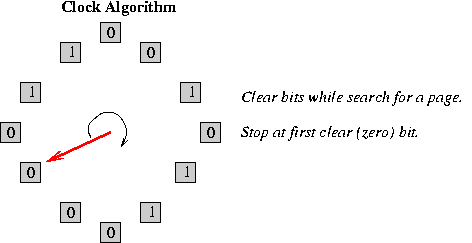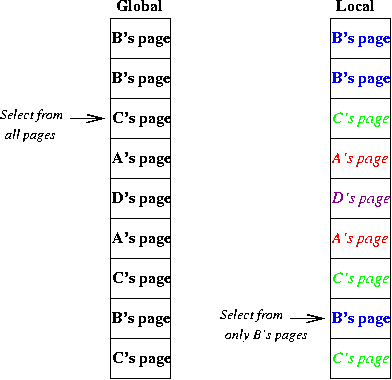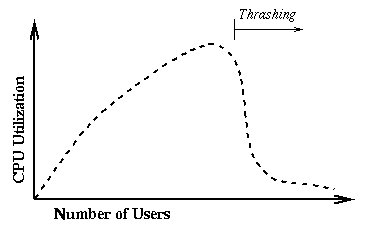
OSTEP Chapter 22
This is an efficient way to approximate LRU.
Clock algorithm: keep "use" bit for each page frame, hardware sets the appropriate bit on every memory reference. The operating system clears the bits from time to time in order to figure out how often pages are being referenced. Introduce clock algorithm where to find a page to throw out the OS circulates through the physical frames clearing use bits until one is found that is zero. Use that one. Show clock analogy.

Fancier algorithm: give pages a second (third? fourth?) chance. Store (in software) a counter for each page frame, and increment the counter if use bit is zero. Only throw the page out if the counter passes a certain limit value. Limit = 0 corresponds to the previous case. What happens when limit is small? large?
Some systems also use a "dirty" bit to give preference to dirty pages. This is because it is more expensive to throw out dirty pages: clean ones need not be written to disk.
What does it mean if the clock hand is sweeping very slowly?
What does it mean if the clock hand is sweeping very fast?
If all pages from all processes are lumped together by the replacement algorithm, then it is said to be a global replacement algorithm. Under this scheme, each process competes with all of the other processes for page frames. A per process replacement algorithm allocates page frames to individual processes: a page fault in one process can only replace one of that process' frames. This relieves interference from other processes. A per job replacement algorithm has a similar effect (e.g. if you run vi it may cause your shell to lose pages, but will not affect other users). In per-process and per-job allocation, the allocations may change, but only slowly.

Thrashing: consider what happens when memory gets overcommitted.
Thrashing occurs because the system does not know when it has taken on more work than it can handle. LRU mechanisms order pages in terms of last access, but do not give absolute numbers indicating pages that must not be thrown out.

What can be done?